Summary
Dear sedaDNA enthusiasts,
Hello and welcome to the July newsletter!
First, we wanted to say thank you to everyone who joined the sedaDNA conference in Tromsø! We hope you were able to catch up with everyone you wanted to, and maybe even managed to make some new friends. To all of you who couldn't make it; you were missed and we hope to see you next time. Finally, thank you to everyone in Tromsø for making the conference happen. The next sedaDNA conference will be in Copenhagen in 2027, and we are looking forward to seeing you there!
To add to the news, we wanted to draw attention to a new page that is being launched on the website. To support the Early Career Researchers in our field, we wanted to provide some visibility for them and their work. So, we created a new page featuring recently graduated researchers, to provide a short overview of the thesis and status of employment. While we don't have the ability to backtrack everybody, if you obtained your PhD in 2024 or later and want to be displayed, please fill in this form (or send an email to here) to be displayed in the "sedaDNA Hall of Fame"! We ask you to fill in the following information:
- Name
- Photo
- Date of defence
- Affiliation
- Link, title, and a brief overview of the thesis
- A website link (optional)
- If you're currently looking for a job (or your current position)
Finally to the research, over the course of June, eight papers and six preprints were published. There is one job position to announce and no new conference sessions at the moment (see the Events tab for other events previously announced).
Wishing you a fabulous July,
The organising board
New papers
Juliane Rohman et al., (2025) published "Extending monitoring with sediment archive approaches: Comparison of biomonitoring, metabarcoding, and biomarkers to assess past phytoplankton dynamics" in Limnology and Oceanography: Methods.
Marissa L. Ledger et al., (2025) published "Sedimentary ancient DNA as part of a multimethod paleoparasitology approach reveals temporal trends in human parasitic burden in the Roman period" in PLOS Neglected Tropical Diseases.
Laura Gedminienė et al., (2025) published "Effects of Lateglacial and Holocene climate change on southern Baltic environments: a plant sedaDNA and diatom sediment record" in Quaternary International.
Marisol Felip et al., (2025) published "Comparative analyses of 18S rDNA regions for assessing the eukaryotic community in ancient lake sediment samples" in Journal of Paleolimnology.
Anastasia Poliakova et al., (2025) published "Vegetation and environmental dynamics in the central part of the Kola Peninsula during the past 13.3 ka as reflected by ancient plant DNA on sediments from Lake Imandra" in Journal of Quaternary Science.
Meryem Mojtahid et al., (2025) published "Combining morphological and molecular data to study past foraminiferal communities from a temperate coastal sediment core" in Boreas.
Prashasti Singh et al., (2025) published "Enhanced sedimentary ancient DNA (sedaDNA) retrieval from Antarctic diatoms" in Marine Micropaleontologys.
Qitao Hu et al., (2025) published "Comparing Protein Stability in Modern and Ancient Sabkha Environments: Implications for Molecular Remnants on Ancient Mars" in International Journal of Molecular Sciences.
Preprints
Dhanushka Devendra et al., (2025) wrote the preprint "Expanding the footprint of the Storegga tsunami through new evidence from Arctic marine sediments" available on Research Square.
Renato La Torre et al., (2025) wrote the preprint "Sedimentary ancient DNA metagenomic analysis provides new insights into farming in central Norway from the Bronze Age to late Medieval period" available on BioRxiv.
Ulrike Herzschuh et al., (2025) wrote the preprint "Quantitative climate reconstruction from sedimentary ancient DNA: framework, validation and application" available on EGUsphere Preprint repository.
Christiane Boeckel et al., (2025) wrote the preprint "DNA virus–host patterns in lake and marine environments over the last glacial cycle" available on BioRxiv.
Dilli Rijal et al., (2025) wrote the preprint "Millennia of metacommunity diversification and homogenization captured by sedimentary ancient DNA" available on Authorea.
Arthur Kocher et al., (2025) wrote the preprint "A minimal hybridization capture system for the parallel enrichment and cost-effective detection of ancient human pathogens" available on BioRxiv.
New positions
The Molecular Ecology & Paleogenomics (MEP) lab at NORCE Climate and Environment in Bergen, Norway are looking for a fulltime permanent lab engineer. For full position details click here . Application deadline is 1st August 2025.
About the position:The Molecular Ecology and Paleogenomics Research Group (MEP) applies molecular tools to address basic ecological and climatic questions. Our research covers marine and fresh water, sediments, and sea ice and contribute to a better understanding, and a sound management, of marine and freshwater ecosystems. MEP has a project portfolio that includes research projects funded by the Norwegian Research Council (RCN), European Research Council (ERC) and EU-H2020. We are now seeking a highly motivated laboratory engineer to strengthen our research group and contribute to driving our research forward. The engineer will be involved in a range of different research tasks within MEP and have a major role in further development of our laboratory facilities, with a special responsibility for our ancient DNA laboratory, developing and applying molecular tools to address ecological research questions, as well as instructing and supporting students and guest researchers in the aDNA lab. In addition, we frequently go out to sea on research expeditions, and participation in field sample collection is encouraged.
Please email any questions about the position to Research Director Aud Larsen.
If you have a query or something to annonce, click here, and if you have a recent paper to share in the next newsletter, let us know.
